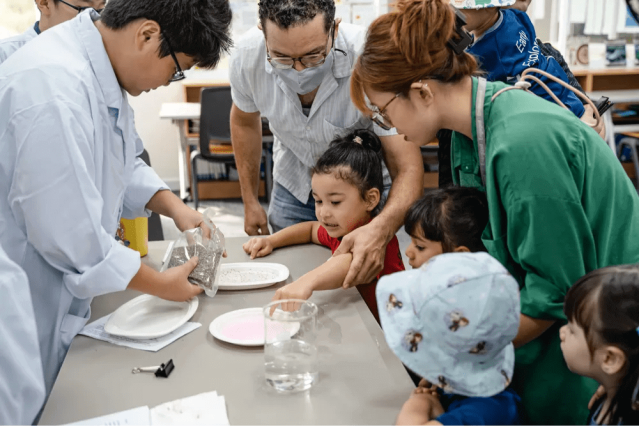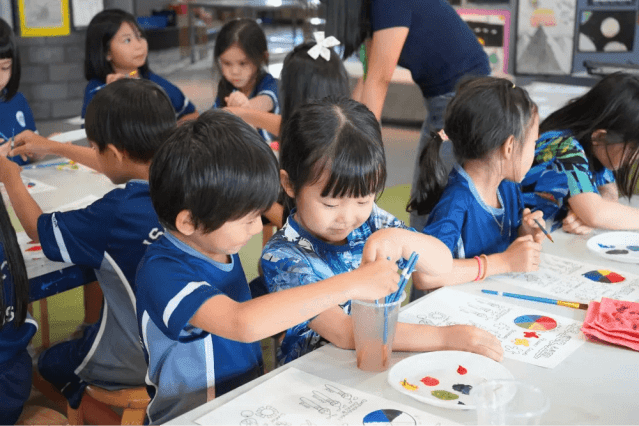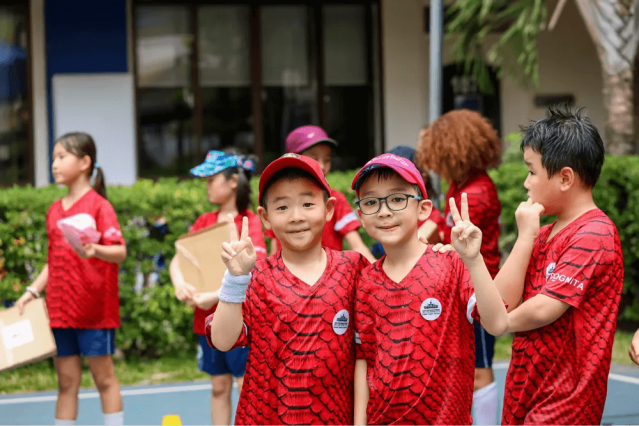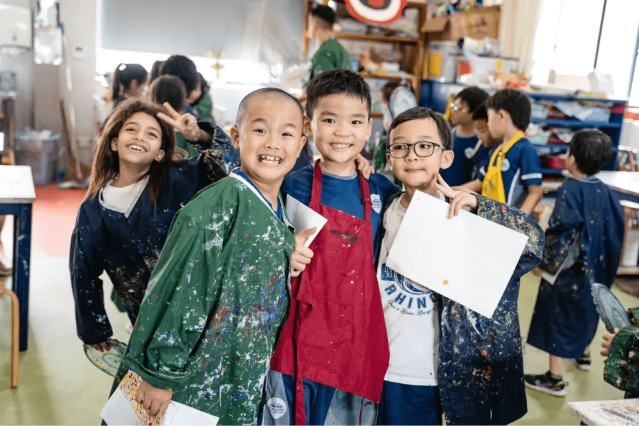Best Practices for Parallel Play in Child Development
Play-based learning is widely recognized as an essential component of healthy development in young children. Through exploration and imaginative scenarios, children naturally build a groundwork for critical skills like problem-solving, language development, and social interaction.
One specific stage within play-based learning, parallel play in child development, offers unique benefits for toddlers aged two to three. During this stage, children play alongside peers, often with similar toys or themes, but without directly interacting.
While it may appear solitary at first glance, nurturing this type of play can significantly enhance a child’s social, emotional, and cognitive growth. Below are the best practices for parallel play in children:
- Sensory Play
- Art and Craft Activities
- Object Play
- Language Play
- Pretend Play
What is Parallel Play?
Parallel play in child development refers to the same interacting behaviors toward a similar toy in the same area without engaging with each other. In parallel play, kids do not talk about their plays but keenly watch what others are doing. This type of play provides a context for children to begin developing and practicing new play skills through imitation.

Furthermore, parallel play creates a safe space for children to experiment with social interaction at their own pace. Witnessing and imitating their peers allows them to build confidence and gradually develop the skills necessary for more cooperative play, as often seen in back to school activities for preschoolers, ultimately contributing to stronger social bonds and self-esteem.
Best Practices for Parallel Play Activities
The following section will bridge the gap between theory and practice. Having established the significance of parallel play in child development, we will provide concrete guidance for implementing effective parallel play activities.
Sensory Play
Sensory play involves engaging children in activities that use their senses of touch, sight, smell, taste (with caution), and hearing. It allows them to explore their senses while taking part in parallel play with other children.

This form of amusement can be helpful for language and communication skills building as well as cognitive development, such as the social-emotional ability to think critically and physical competence.
Moreover, sensory games can help calm children down by making them feel at ease with themselves.
Examples of sensory games:
- Playing with water or sand tables
- Finger painting
- Playing with Play-Doh or slime
- Exploring sensory bins filled with materials like beans, rice, or sensory balls
Art and Craft Activities
Art and craft activities give children an opportunity to work with materials such as paint, paper, glue, and markers to create various things.

By participating in art projects and crafts, children are nurtured in different skills, including creativity, fine motor skills, and cognitive abilities like problem-solving and critical thinking.
Moreover, arts and crafts activities provide children with an outlet to discover their ideas and preferences as well as help them grow their imagination and creativity.
Examples of Arts and Crafts activities:
- Finger painting
- Drawing
- Collage-making
- Clay sculpting
- Playdough
Object Play
Object play refers to children’s exploration of objects during play. It covers a wide range of actions, from mouthing and dropping objects in infancy to more complex ones like building structures or using toys for pretend play by toddlers.
Children’s creativity and problem-solving abilities are nurtured through object play as they experiment with various functions and combinations.

While object play offers numerous benefits, parents should consider the child’s age, the complexity of the task, and the learning objectives – whether focused on acquiring specific skills or nurturing a general sense of curiosity and imagination.
Examples of object play:
- Building with blocks
- Sorting and classifying toys
- Playing with toy vehicles, musical instruments, and kitchen toys
- Filling and dumping containers
- Stacking and knocking down towers
Language Play
Despite proof of language development through solitary babbling, most benefits come from social interaction. Language play is a playful use of language, often observed in toddlers and preschoolers, that can involve repetition, humor, and exploration of sounds and meanings.
This type of play also provides a natural environment for children to develop their language skills, including phonology (speech sounds), vocabulary and meaning (semantics), grammar (syntax), and pragmatics (using language appropriately in social situations). Even in a parallel setting, children absorb language through ambient interaction and imitation, crucial for language development in early childhood.
Examples of language play:
- Imitating animal sounds together
- Take turns coming up with rhyming words or phrases
- Making up silly songs
- Playing with sounds
- Attempt tongue twisters and jokes
Pretend Play
Children can be able to use pretend play to act out various situations through their imaginations. Through pretend play, children develop important skills in several areas, including language and communication, social and emotional skills, and cognitive skills such as problem-solving and critical thinking.

Additionally, it will help them consider different perspectives, listen effectively, and clearly express their ideas. They can also learn how to share their ideas with others and take turns in such activities.
Examples of pretend play:
- Playing dress up
- Playing house
- Role-playing games like doctor, firefighter, superheroes or Star Wars
- Hosting tea parties
Benefits of Parallel Play in Child Development
Play helps young kids learn and develop, parallel play provides them with another set of benefits. Here are ten ways parallel play contributes to your child’s health.

- Develop language skills: As toddlers play independently but alongside others during parallel play, they will be absorbing language like sponges from nearby children and adults. They might even pick up new words by observing how others interact with objects.
- Learn to share and take turns: During parallel play, children are close to each other and their toys, which can lead to instances where they assert themselves and explore the concept of ownership by saying “mine.” It is a natural part of development and a stepping stone toward understanding, sharing, and taking turns.
- Develop gross and fine motor skills: Regardless of their social play style, toddlers are constantly manipulating objects. Play is an opportunity for kids to observe other kids playing with toys and imitate them by using the same toy in ways they never considered before, therefore enhancing both fine motor skills and gross motor skills.
- Support expressing children’s feelings: parallel play is particularly useful in helping children express themselves. Using toys or real objects surrounding them, they reveal happiness or anger, among many other feelings. Also, this independent play allows them to explore their feelings freely without the pressure of direct social interaction.
- Build confidence: Experimenting with toys during parallel play builds a toddler’s confidence in their abilities. This newfound confidence can also pave the way for more active participation in group play as they develop.
- Respect boundaries: While playing alongside each other, children learn about personal space and respecting the boundaries of others. They start understanding the concept of mine and yours and gradually learn to share.
- Self-regulation: Parallel play provides a low-pressure environment for children to practice self-control. They can focus on their playthings and activities, managing their emotions and impulses independently.
- Creativity: Parallel play allows children the freedom to explore their creativity and imagination. Observing peers can spark new ideas and expand their play themes, even if direct interaction is not present.
- Social cues from peers: Although not directly interacting, children are still very aware of their peers during parallel play. They begin to pick up on social cues and nonverbal communication, which will be helpful for future social interactions.
- Body awareness: Parallel play can also contribute to the development of body awareness. Children are constantly moving and manipulating objects during play. By observing their peers, they can pick up on new physical skills, further refining their physical abilities.
Nurturing Your Children’s Development with ISHCMC
ISHCMC provides a play-based learning environment equipped with diverse materials and dedicated spaces to cultivate children’s development stages. Our educators are adept at facilitating a learning environment with a balance of standards, challenge, and support, tailoring to individuals’ interests.

To learn more about how ISHCMC can support your child’s social development, contact us today to apply!
FAQs
Having explored the knowledge and practices of parallel play in child development, this section delves into a series of FAQs about parallel play activities.

When does parallel play start?
Parallel play typically starts around 2 years old. While children play side-by-side, they aren’t directly interacting yet. This stage is a stepping stone towards more social forms of play.
When does parallel play end?
There is no single right answer to “when do kids stop parallel play?”.
While children may play near others at any age, parallel play, where they play independently but with similar toys, typically transitions to more interactive play around 3-4 years old.
How can parents support play-based learning?
Parents can nurture learning through play by providing open-ended toys and letting children lead the fun (child-initiated play). Ask open-ended questions and offer materials to spark curiosity (guided play).
Regarding focused learning, some schools introduce structured activities (adult-led activities) that require the participation of parents to guide and support children.






